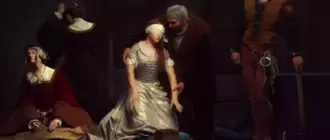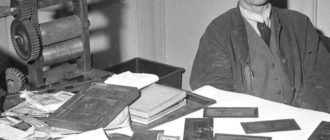
Sanguine is a popular art material from the Renaissance to the present day
Sanguine (from the Latin sanguis – “blood”) is a soft material for drawing in the form of crayons (bars) of red color. Depending on the method of preparation and chemical composition, the color of sanguine varies from deep brown to terracotta. Artists mainly use this material when performing preparatory sketches, sketches and studies.
Sanguine, due to its reddish color, is ideal for depicting the structure and proportions of the naked human body on paper. This material can be softened with water as you work to achieve optimum line density and saturation.

Types and features
Sanguine chemical structure is a mixture of white clay (kaolin) and iron oxides. In the old days, craftsmen used natural mineral materials, and modern manufacturers offer artists crayons of artificial origin with the addition of wax and binders.
Sanguine varieties made for professionals and amateurs differ not only in shades, but also in shape. Industrial designs of this artistic material go on sale in the form of:
- bars of round or square section;
- pointed thin rods;
- pencils in a wooden frame.
- The benefits of sanguine include:
- high resistance to sunlight;
- a wide variety of shades;
- affordable cost of quality materials;
- the ability to use in various combined painting techniques.

The main disadvantage of the sanguine is considered to be the fragility of the finished images. The smallest particles of coloring pigment can fall off the sheet of paper over time. Therefore, upon completion of the work, artists usually fix the drawing with varnish or place it under glass.
The history of the sanguine
The first attempts to use sanguine as an artistic material go back to prehistoric times. Reddish rock paintings of primitive people have survived to this day in different parts of the Earth, and the age of such images is often tens of thousands of years.
But the professional technique of drawing sanguine appeared much later – in the second half of the 15th century in Italy. There were abundant natural reserves of all the necessary components for production: ocher, Sienese soil and white clay. By firing the main ingredients in different proportions, Italian artisans learned how to make sanguine in various shades, the merits of which were quickly appreciated by the artists.

Many sanguine drawings, created by the greatest masters of the Renaissance and all subsequent historical eras, have survived to this day. This convenient art material has been very popular among painters and graphic artists for over 500 years.
Nowadays, children learn to draw sanguine with pleasure in art schools and kindergartens. And professionals use it to create both completed works of art and preparatory sketches or sketches.

Famous sanguine artists
Famous artists who used sanguine in their work include many great masters of the visual arts. Among them, the following stand out:
- Leonardo da Vinci is the genius of the Italian Renaissance. With red chalk, he often made sketches from nature of the naked body. The famous “Turin self-portrait” of the great inventor, scientist and artist was painted in the same technique.
- Raffaello Santi is an equally famous master of painting of the High Renaissance. Raphael used the sanguine not only as an additional tool, but also created completely independent works of art with its help.
- Pieter Paul Rubens is the greatest Flemish painter of the 17th century. Many original drawings by Rubens on religious and mythological themes have survived to this day.
- Jean-Baptiste Greuze is a prominent representative of the portrait genre in French painting of the 18th century. His numerous preparatory sketches for the sanguine are striking in their detailed depictions of the heroes of future paintings.











